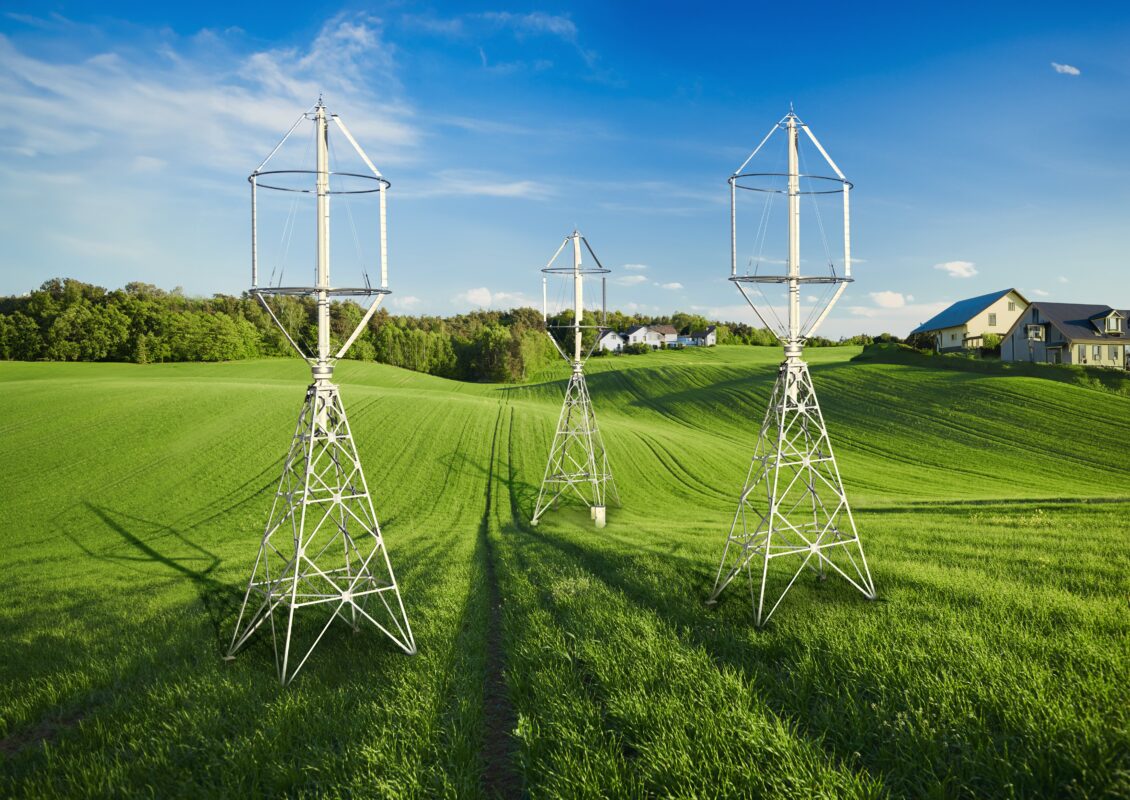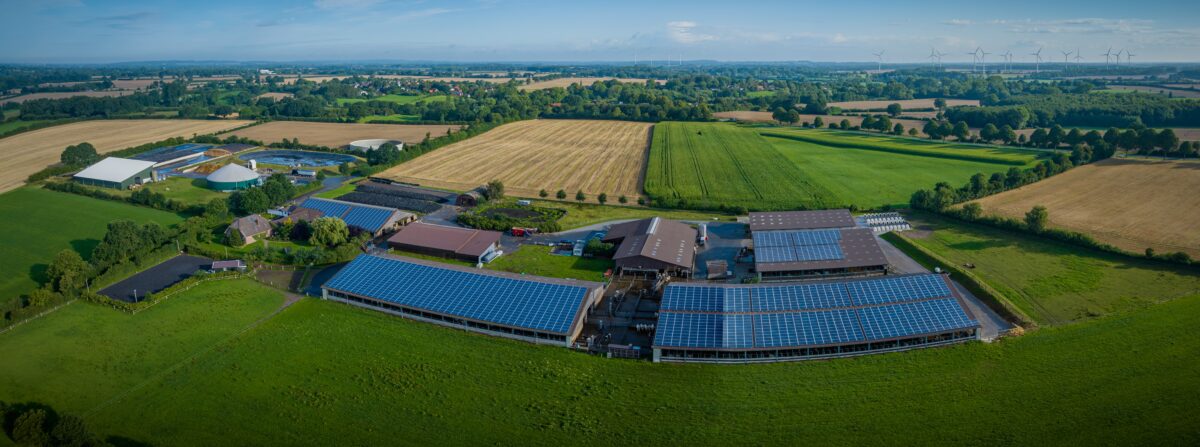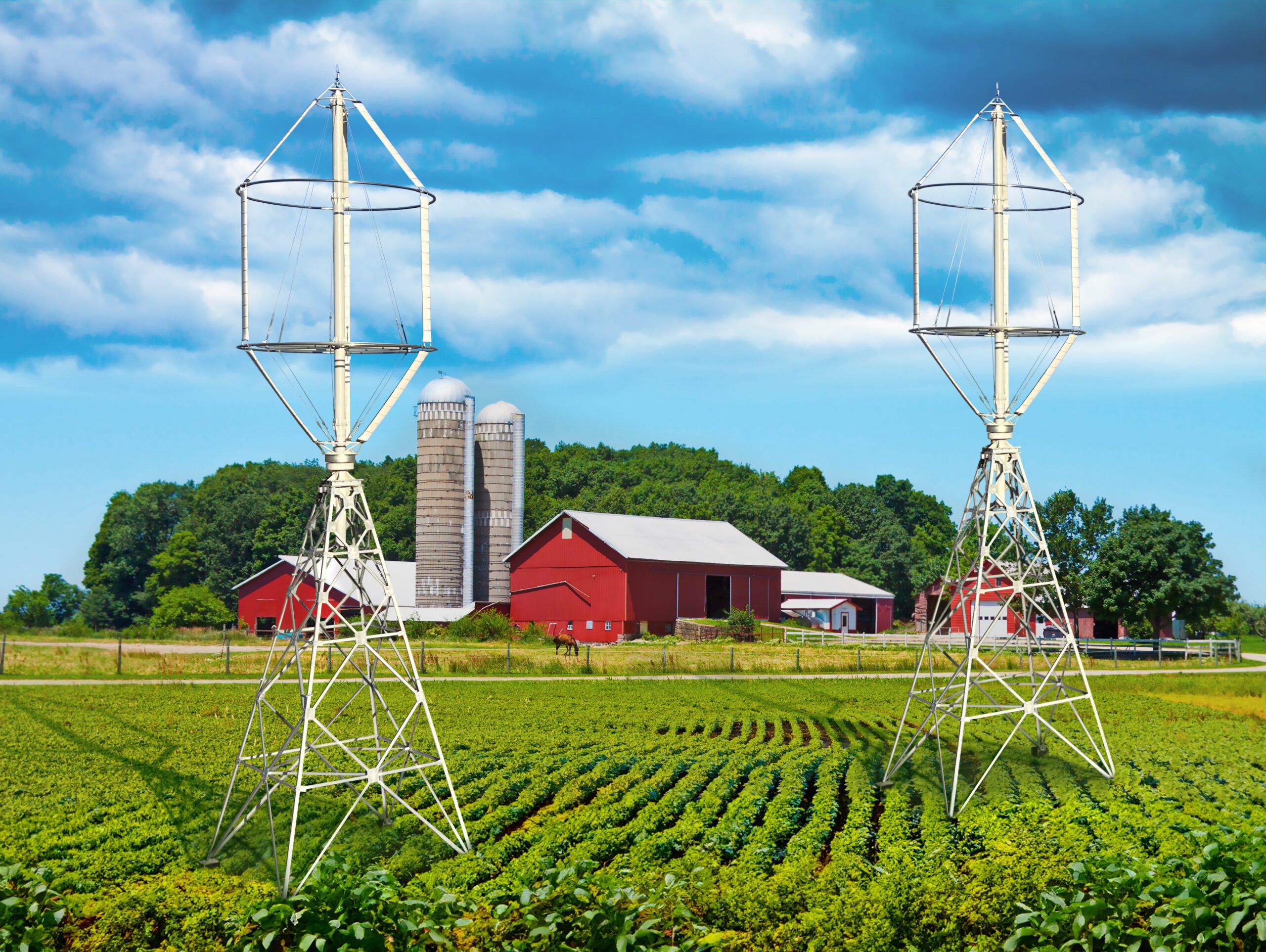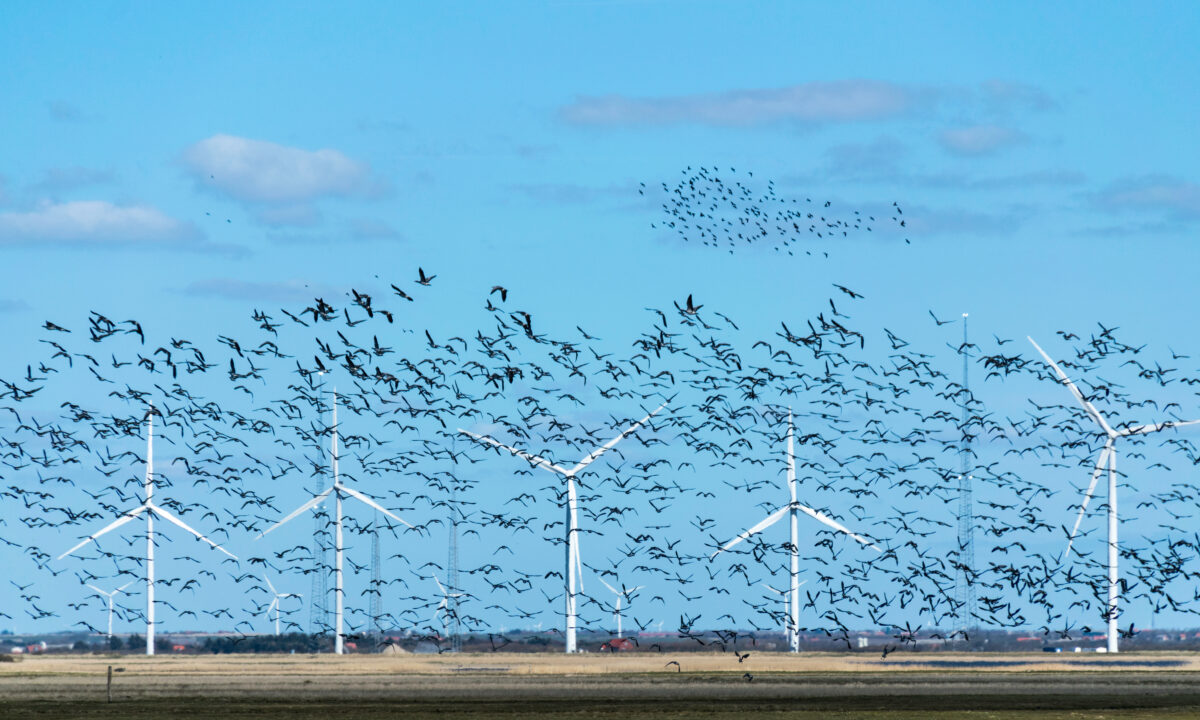Introduction
The search for alternative and eco-friendly energy sources is gaining ground. This is due to ever-rising prices for conventional energy and increasing global attention to environmental issues. Agriculture is a key sector of the global economy. It must trim expenses and find ways for sustainable development. In this context, small wind turbines offer an innovative solution in agriculture and on farms. They can help reduce dependence on conventional energy and substantially decrease the agricultural sector’s carbon footprint. Small wind turbines can generate electricity from renewable sources. They offer an increasingly attractive option for farms of various sizes.
Their use helps to both meet the own electricity needs and promote the principles of green economy in agriculture. This, in turn, improves farms’ competitive edge. It amplifies their opportunities. It opens new prospects for sustainable rural development. This article aims to shed light on small wind turbine opportunities in agriculture. It assesses the economic viability and environmental rationale of using them on farms. It analyzes lessons from projects completed around the globe. First, we will review the technical aspects of small wind turbines and their advantages.
Next, potential challenges related to their use in agriculture will be examined. Finally, we will outline prospective developments in light of global energy and green economy trends. The use of small wind turbines in agriculture is part of a broader sustainable development strategy. This strategy supports a green economy transition through environmentally friendly technologies in conventional sectors. Small wind energy offers an alternative source and a powerful tool for environmental sustainability. It also provides economic benefits amid changing global energy trends.
Small Wind Turbine Technology
In the modern world, the technology of small wind turbines is becoming a key component in the sustainable development of agriculture and farming. The systems offer an eco-friendly and economically viable way to generate electricity, reducing dependency on fossil fuels and decreasing the carbon footprint. The technology is discussed in greater detail in another article. FREEN is making a significant contribution to the development of this technology, offering a range of small wind turbines designed to meet a variety of needs. One such product is FREEN-20 —an ultra-lightweight vertical-axis wind turbine with flexible blades, which does not require reorientation in response to changes in wind direction. This model is ideal for agricultural applications due to its ability to operate efficiently under diverse wind conditions, starting with a minimum wind speed of 3.5 m/s and reaching maximum power at 17 m/s.
Are you looking for a reliable renewable energy source? Wind energy has been proven to deliver consistent results in the agricultural sector. Start by carrying out a free feasibility study at the point of use to assess the wind potential on your farm.
Key features of FREEN-20:
20 kW rated power output, capable for powering small and middle-sized farms.
Ability to operate both in grid-connected and off-grid energy systems, providing for a versatility of applications. Low noise level and minimal environmental impact, which are critical factors for rural areas.
The use of small wind turbines, FREEN-20 in particular, at farms and in agriculture allows to both cut operational energy costs and enhance ecological sustainability of the production processes. Suitable for installation in diverse locations including remote and hard-to-reach places, these systems can provide a reliable energy source, curtailing the need for a connection to a central power grid. FREEN endeavors to expand the applicability of its products, adapting them to the specific requirements of agriculture, which makes them one of the best choices for farmers seeking sustainable development and energy autonomy. The FREEN products’ efficiency, reliability, and environmental safety make them vital in the transition to renewable energy in the agricultural sector.

Examples of small wind turbine applications in agriculture
Adoption of small wind turbines in agriculture opens new horizons for farmers providing them with an additional source of revenue and facilitating sustainable development of the agrarian sector. The example of wind energy application at a farm in O’Neill, Nebraska, shows how wind turbines have become both sources of electricity and critical economic pillars for the local agricultural producers. Those farmers who have signed agreements for the wind turbine installation on their lands, receive annual payments, making them more resilient to climate and market fluctuations. With the global installed capacity reaching 591,594 MW and an annual growth rate of about 9%(Global Wind Energy Council), wind farms are becoming visible in our clean energy future.
Countries like the USA, China, and the UK are actively developing wind farm usage, emphasizing their importance in achieving the carbon emission reduction goals and transitioning to renewable energy sources. It should be noted that in addition to supporting energy independence and ecological sustainability, small wind turbines enable farmers to continue farming with a slight impact on land use. On average, wind turbines occupy only a quarter to half an acre of land, leaving more than 98% of arable land available for agricultural use. It shows that agriculture and wind energy can successfully co-exist to the benefit of both farmers and the environment. Thus, small wind turbines represent a powerful tool for sustainable agricultural development, allowing farmers to both cut their energy costs and gain an extra income, while ensuring stability and opportunity for further development in the face of the present-day economic and environmental challenges.
Advantages of the use of small wind generators in agriculture
Eco-friendliness: Small wind turbines generate electricity without emitting carbon dioxide or other pollutants, which makes them an attractive option for reducing the ecological footprint of agricultural activities. Energy cost reduction: Utilizing wind as an energy source helps farmers decrease their dependence on conventional energy sources and cut their electricity expenses. Additional income: Hosting wind turbines on agricultural lands can provide farmers with an extra income through lease payments or sale of surplus generated energy. Reliability and resilience: Wind energy reduces dependence on local and global fluctuations in energy prices, providing a steadier and more reliable energy source. Support for sustainable development: Small wind turbines align with the concept of sustainable development in rural areas, facilitating the transition to green technology.
Would you like to know if Freen-20 could definitely reduce costs on your farm? Book a free consultation to assess the wind potential of your farm.
Prospective developments in the small wind turbine use in agriculture
The future of small wind turbines in agriculture looks bright, considering the current renewable energy trends and the ever-growing drive towards sustainability in the agricultural sector. Technological progress, improved economic efficiency, and increased public awareness of the renewable energy benefits contribute to a wider adoption of wind energy by farms and agricultural enterprises.
Technological innovations
Improvements in small wind turbine designs include more efficient blades, enhanced control systems, and integration with energy storage systems. These improvements will substantially increase performance and reliability. Innovations in materials and manufacturing technologies reduce wind turbine costs. This makes them more affordable for a wider range of users.
Economic affordability
As the production grows and the scale of small wind turbine operations expands, their cost will keep decreasing. This, in combination with potential government subsidies and tax incentives in some regions, makes wind energy investments increasingly attractive for farmers and agricultural enterprises.
Integration with other renewable energy sources
Development of hybrid systems combining small wind turbines with solar panels or other renewable energy sources will provide for a more efficient use of the available resources and a steadier energy supply for agricultural needs.
Development of policies and regulations
Along with growing public awareness about the importance of renewable energy, many national governments are expected to adopt supportive policies. These policies will promote the use of small wind turbines in agriculture. This may include financial support as well as simplification of administrative procedures related to wind system installation.
Public perception and awareness
Raising public awareness about the benefits of renewable energy in agriculture is key. This awareness drives the expansion of renewable energy technology. Educational and community-based initiatives are important. They raise awareness about wind energy benefits and its practical applications in rural areas. Such initiatives can significantly speed up local endorsement of these technologies.
Development prospects
The future of small wind turbines in agriculture is promising. This is due to continuous technological progress, increasing affordability, and growing commitments to sustainable practices. In combination with policy support and community engagement, innovations in turbine design and materials are advancing. They will turn wind energy into a key component of sustainable agricultural development.
Technological innovations are likely to entail the development of more efficient and reliable turbines. Economies of scale and policy incentives will make wind energy more affordable to farmers. Integrating wind turbines with other renewable energy sources can provide a steadier energy supply. A steadier energy supply is vital for agricultural operations.
As policies and regulations to support renewable energy evolve, small wind turbines in agriculture are expected to increase. This increase contributes to a greener and more sustainable future for agricultural communities worldwide.

Conclusion
The use of small wind turbines in agriculture opens up new opportunities for sustainable development of the agricultural sector. Technological progress contributes to clean energy expansion. Wind turbine installation and operation costs have been reduced. Public and government recognition of the need to transit to renewable energy is increasing. These factors create favorable conditions for expanding clean energy use on farms and agricultural enterprises.
Small wind turbine integration with other renewable energy sources, such as solar panels, enables the development of efficient hybrid systems. These systems provide reliable and continuous energy supply for agricultural needs. Government support in the form of subsidies and tax incentives expedites wind energy adoption in agriculture. This support makes investments in the technology even more attractive to farmers.
Efforts to raise public awareness about renewable energy in agriculture must continue. These efforts will help unleash the full potential of small wind turbines. Educational programmes and campaigns can showcase success and best practices. They can foster positive attitudes toward wind energy among farmers and local communities.
In conclusion, the prospects for the use of small wind turbines in agriculture appear highly promising. The technology evolves and becomes more affordable. Political and economic support also improve. Wind energy can become a key component of sustainable and efficient agricultural production. Wind energy fights climate change and reduces dependency on fossil fuels. It opens new horizons for rural development. Rural areas become greener, more productive, and more economically resilient.






